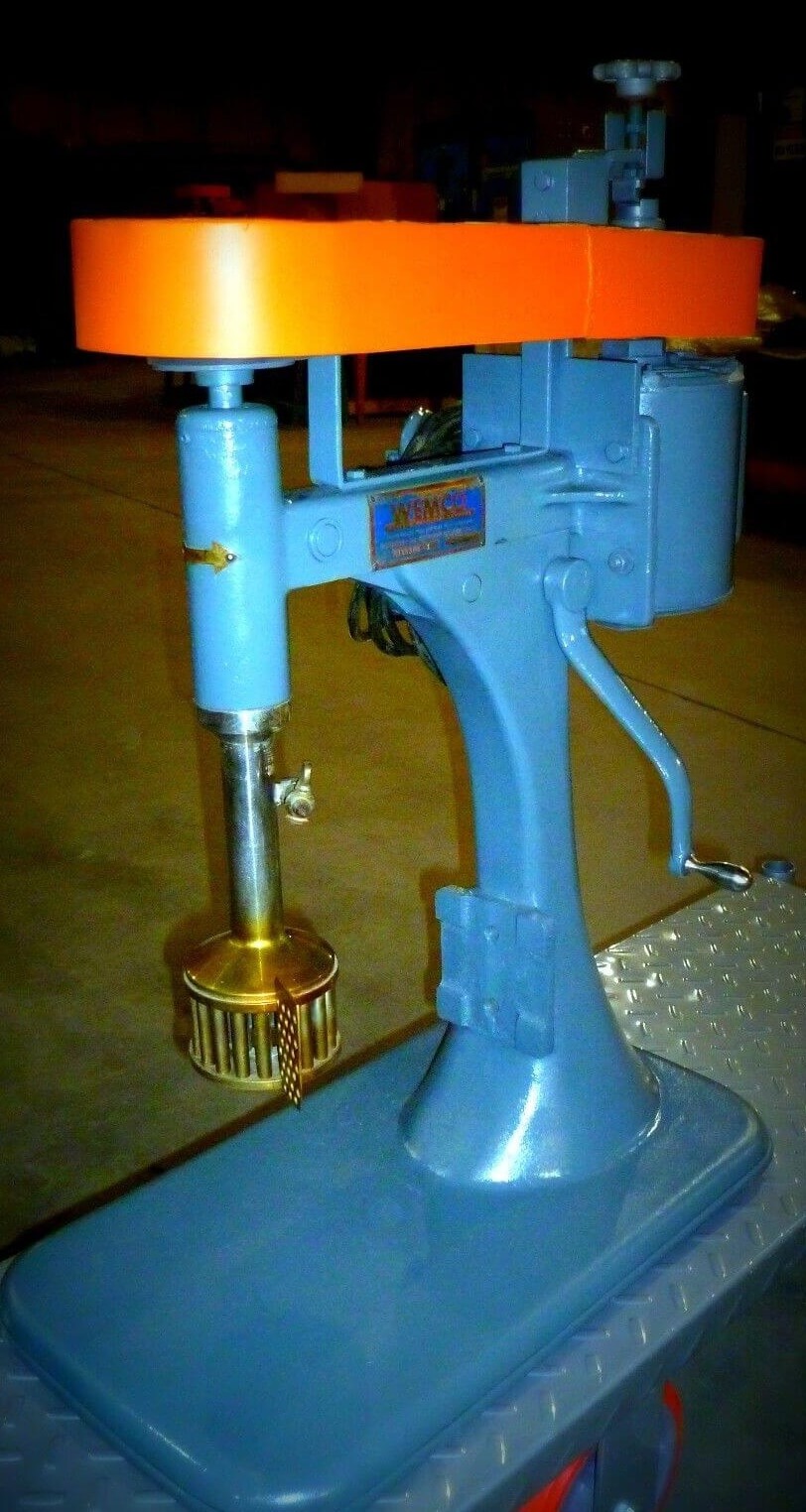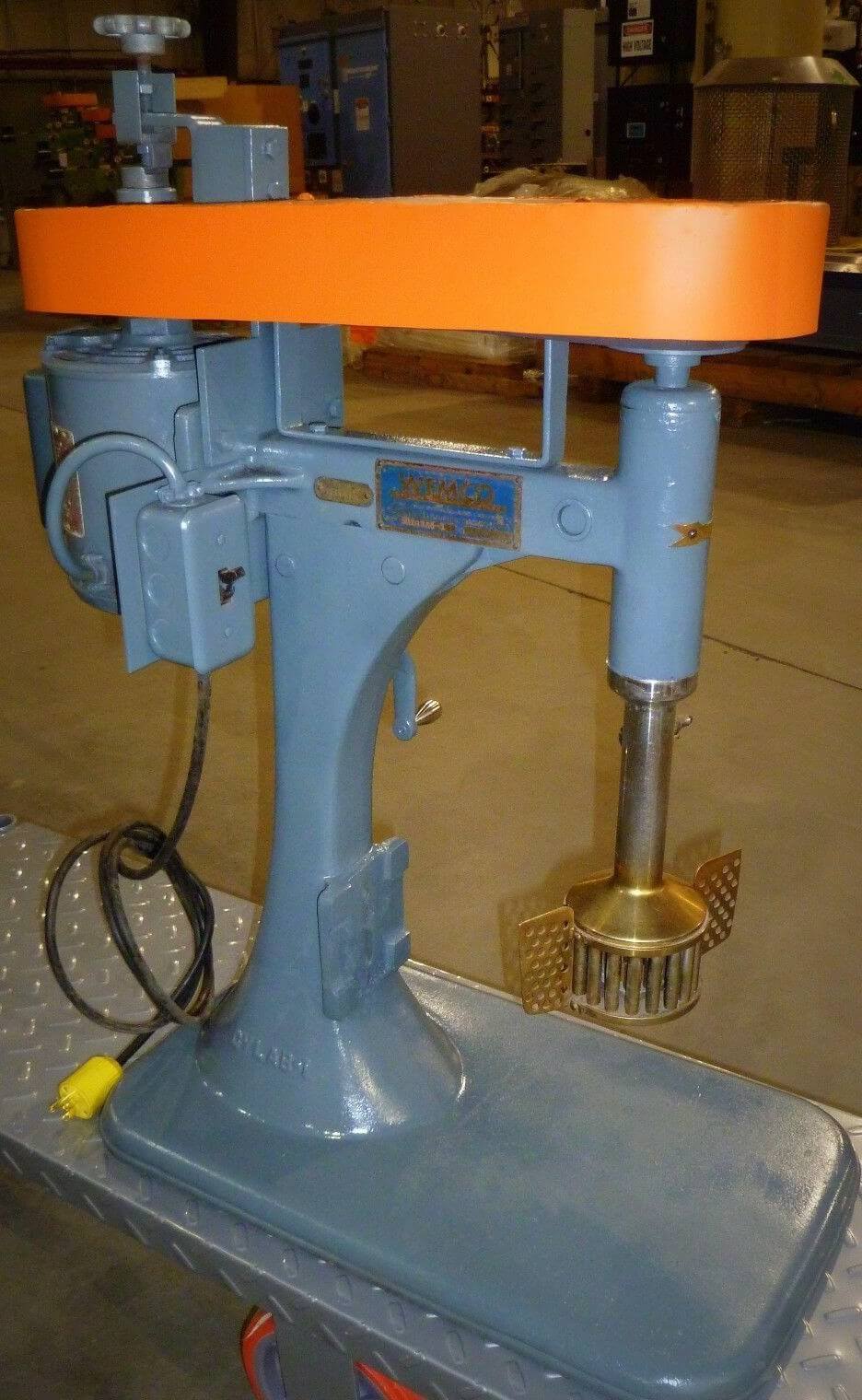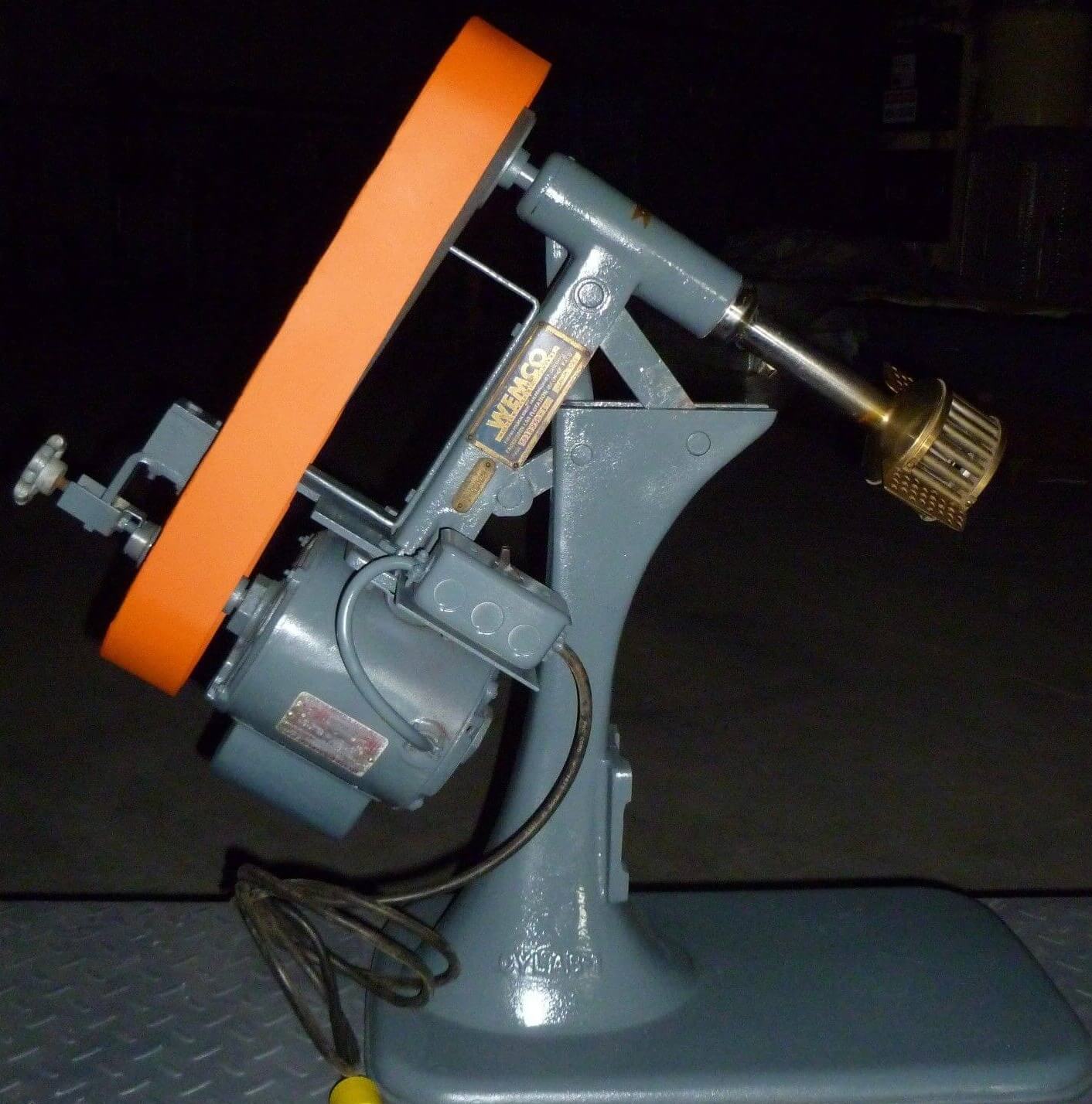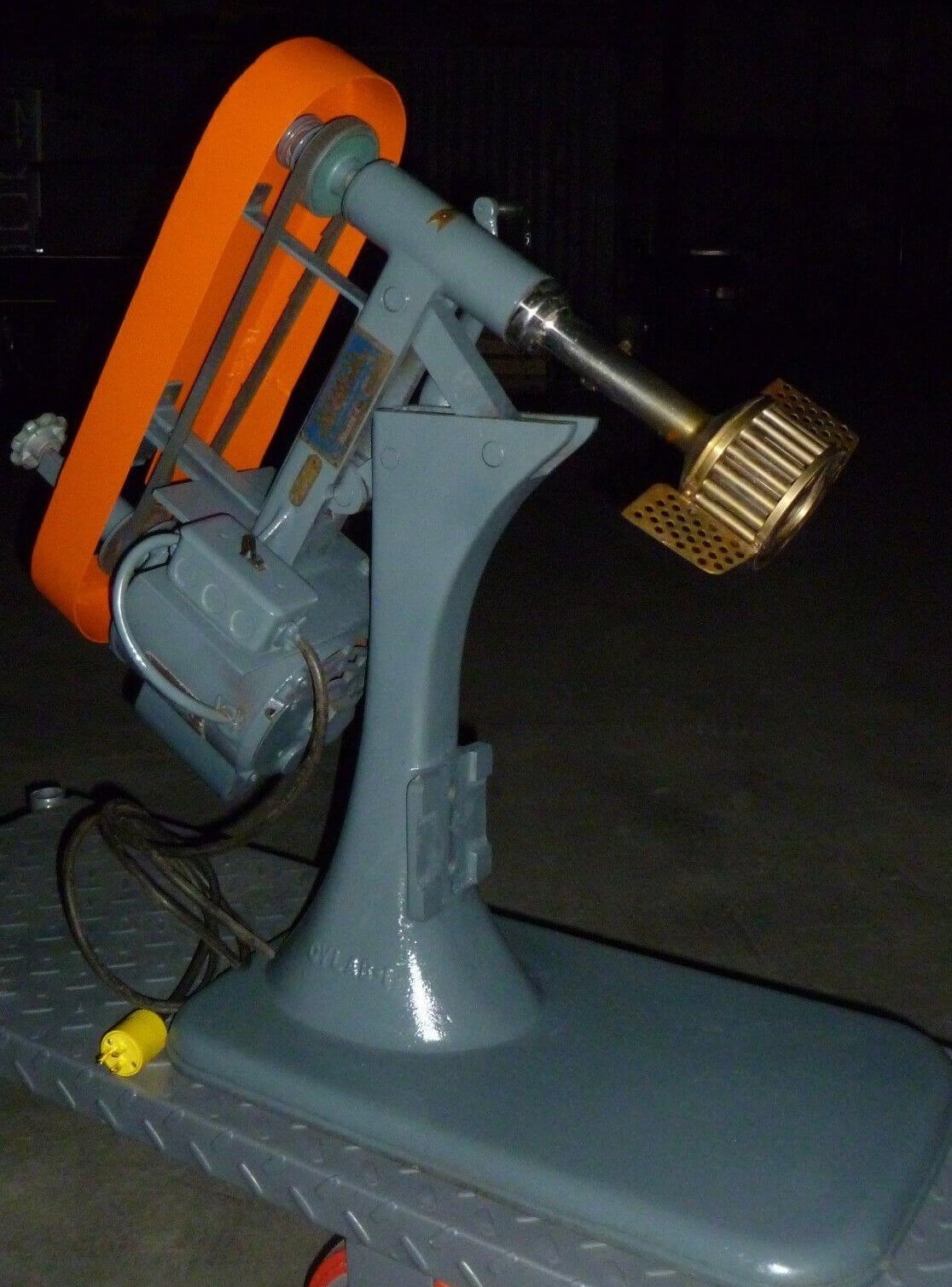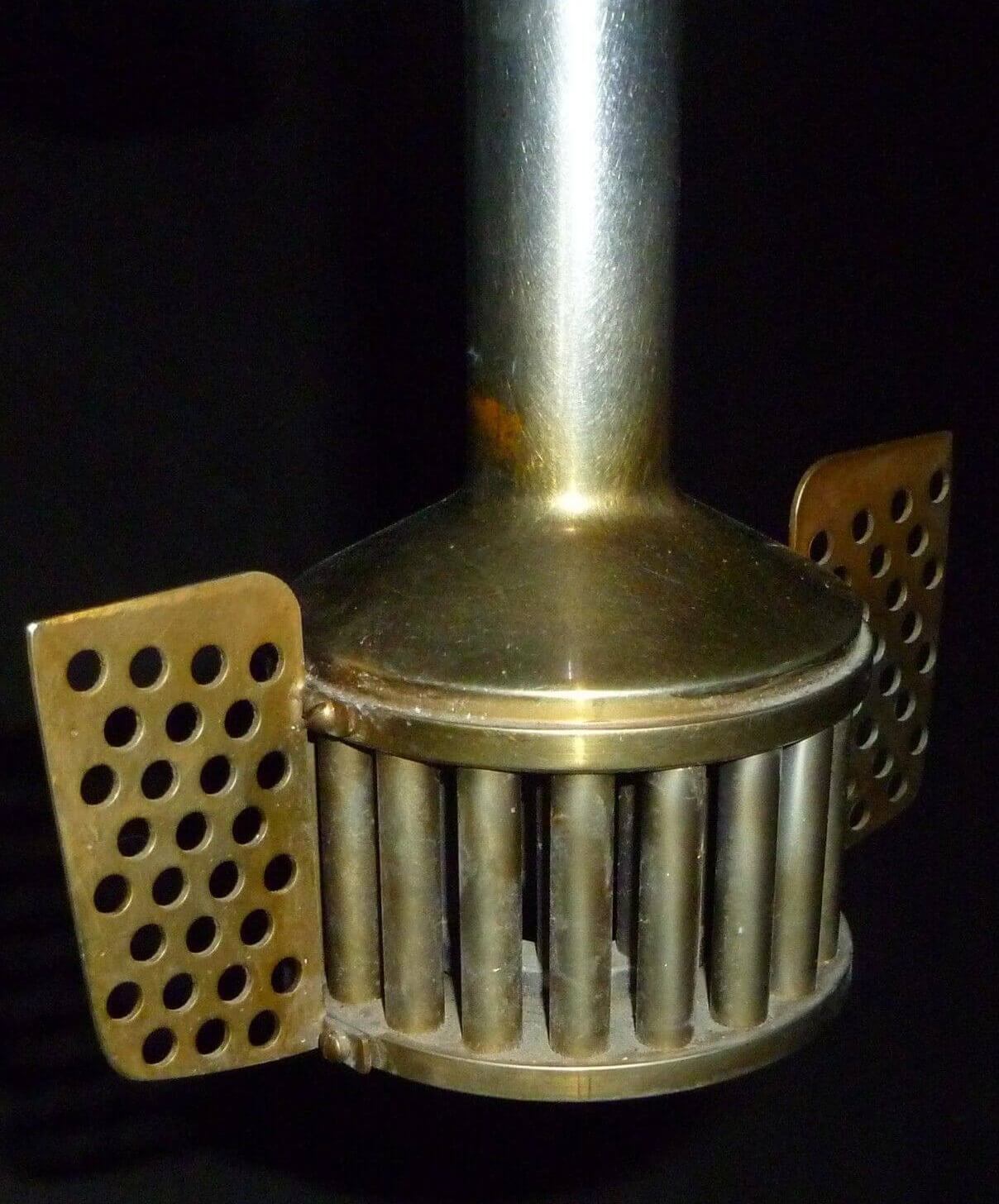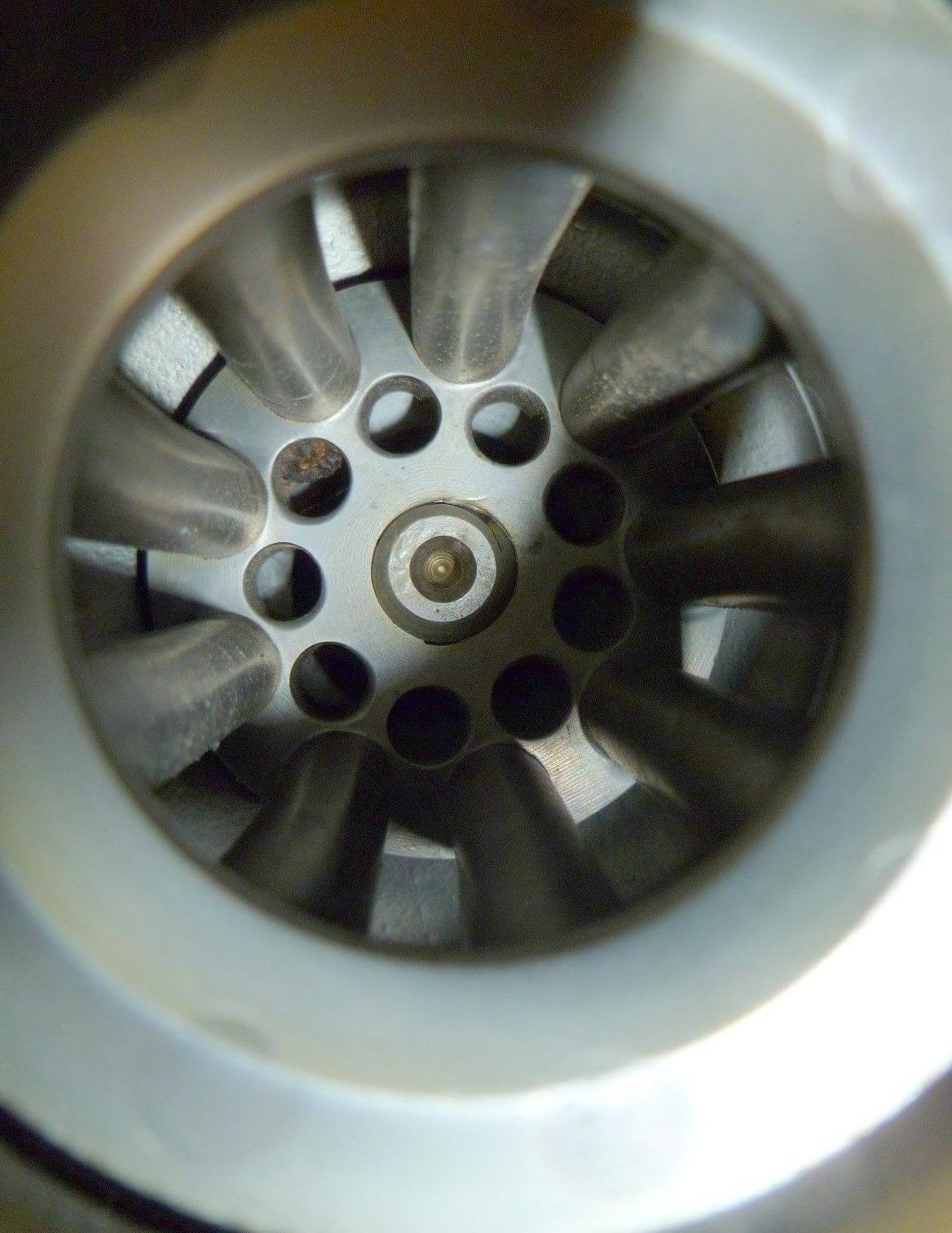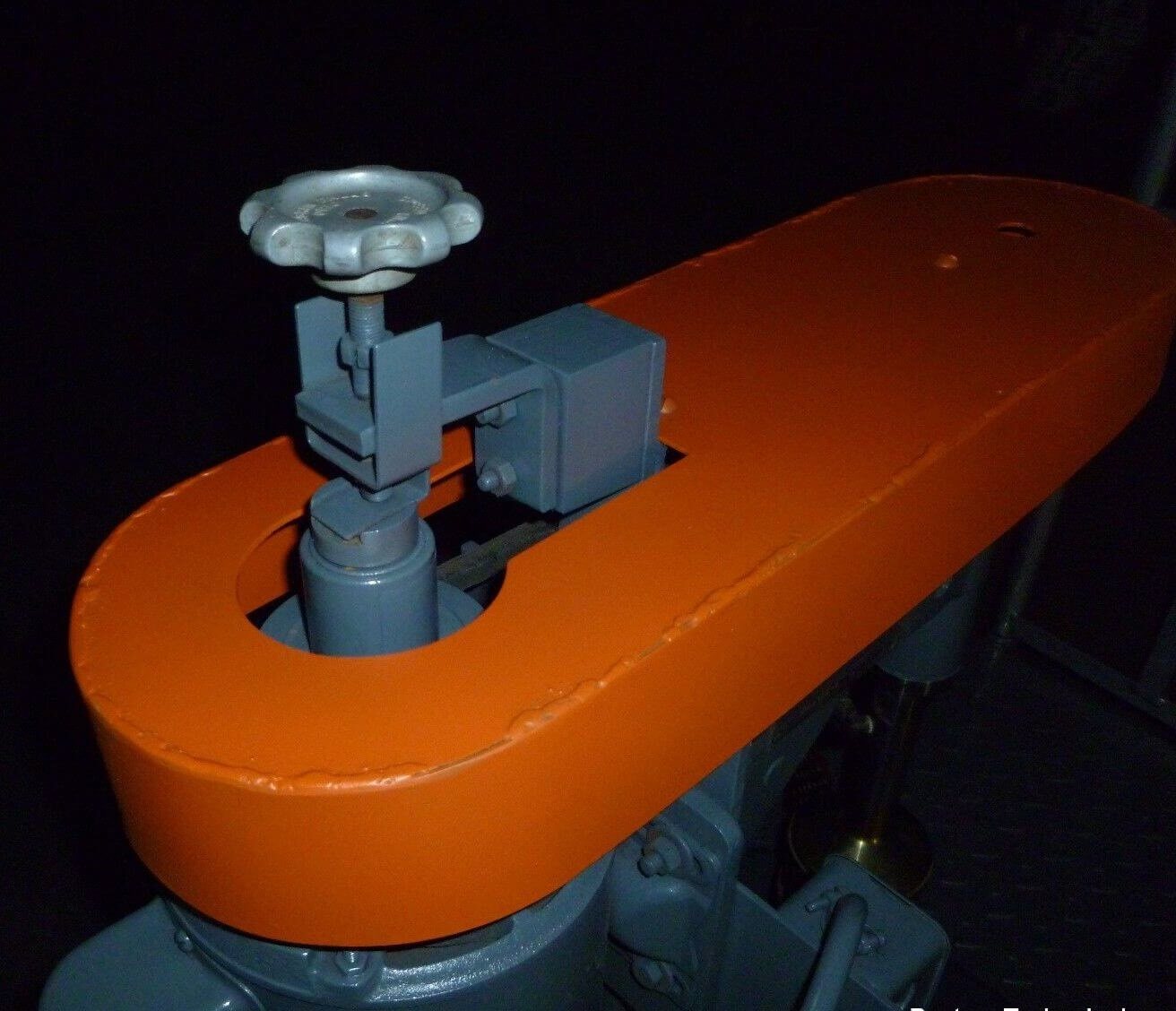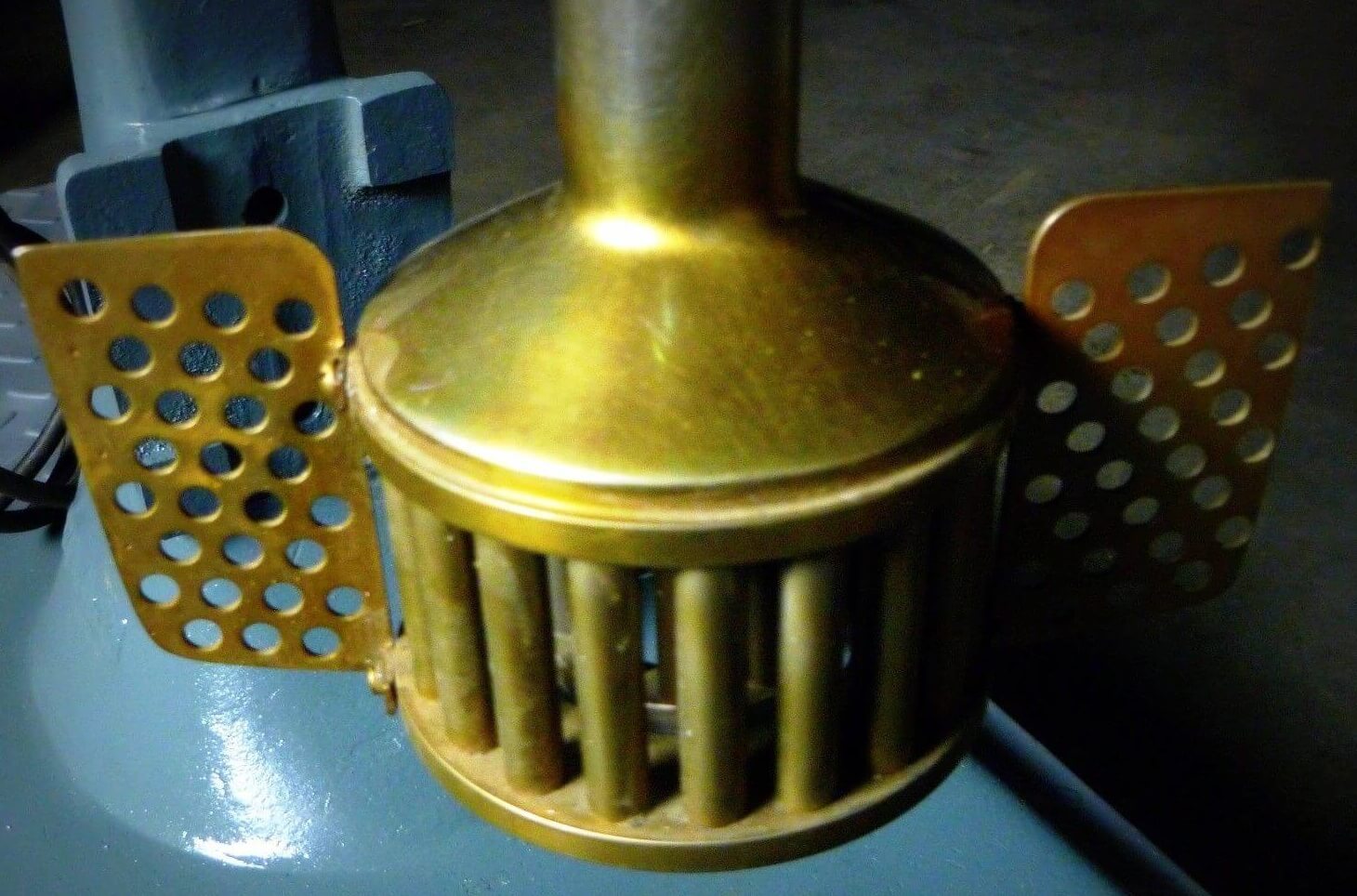Table of Contents
William Fagergren invented the Fagergren or WEMCO flotation cell. Fagergren licensed all but his earliest U.S. patent to the American Cyanamid Co. of New York. American Cyanamid actively promoted the Fagergren machine, and issued sublicenses to Sumitomo Heavy Industries in 1937. for manufacture, distribution, and sales to applications besides cement; to FLSmidth in 1938. for manufacture, distribution, and sales to cement and nonmetallic applications; to the Dorr Company in 1946, for manufacture, distribution, and sales to applications besides cement; to the Hoffman Machine Co in 1946, lor manufacture, distribution, and sales in applications for treating lubricating coolants, and to FLSmidth in 1947. lor manufacture, distribution, and sales for treating metallic ores.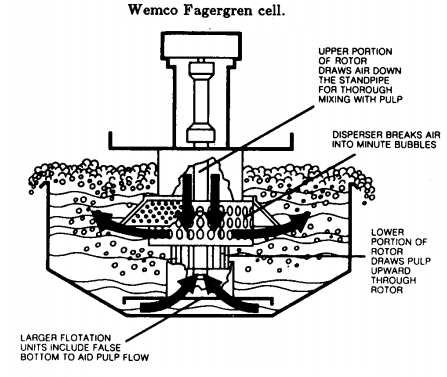
Just prior to the licensing with American Cyanamid. Fagergren had made an agreement with Utah Copper to develop and adapt the machine to its operations on a “shop-right” basis. This work was going on during 1934 and 1935. In an experimental flotation section at the Magna Mill, Kennecott placed a clear glass side in one of the steel Fagergren machines, so that the action and bubble formation could be observed. The air mixing w^as reportedly so intense that bubbles grew on the glass from pinpoint size much like the carbon dioxide bubbles in a highly charged soda water. Eventually both of Kennecott’s mills. Magna and Arthur, used Fagergren machines. These were the largest mills of their day. Magna had 60 ball mills and Arthur had 65. each mill being 2 m (6 ft) in diameter and 3 m (9 ft) long. The flotation circuit in each plant had more than 1.000, 2-m3 (70-ft3) cells, and the work force in each plant exceeded 1.000 Figure 1 shows the flotation section of the Magna Mill in the early 1960s.
Fagergren Flotation Machine
 The Fagergren Flotation Machine has been placed on the market by the American Cyanamid Company. It consists of a cell of unit construction containing a stator and a rotor, a complete machine being formed by mounting the required number of units in series.
The Fagergren Flotation Machine has been placed on the market by the American Cyanamid Company. It consists of a cell of unit construction containing a stator and a rotor, a complete machine being formed by mounting the required number of units in series.
Fig. 37a shows the circular and Fig. 37b the square cell. The construction of the stator is shown in Fig. 38. It is made up of a number of cylindrical steel spacing bars, generally rubber-covered, mounted between two rings, the lower one being bolted to the bottom of the cell, while the upper one is secured to the superstructure of the cell by a steel cylinder. The rotor (Fig. 39) is similar in construction to the stator, but the rings are fitted with impellers, top and bottom. It is mounted on a short shaft which is connected to the driving shaft of a vertical motor. The latter is secured to the superstructure so that the rotor revolves inside the stator round an axis common to both of them. The peripheral speed of the rotor is maintained at 2,100 ft. per minute irrespective of its diameter.
The feed enters the cell through a circular port in the bottom, and is drawn up into the rotor by the action of the lower impeller ; the suction exerted by the upper impeller draws air down into the pulp at the same time. The combined effect is to force the aerated pulp through the rotor and stator into the outer zone. The rapid compression and expansion of the mixture as it passes through the spacing bars produces intense agitation and very thorough aeration.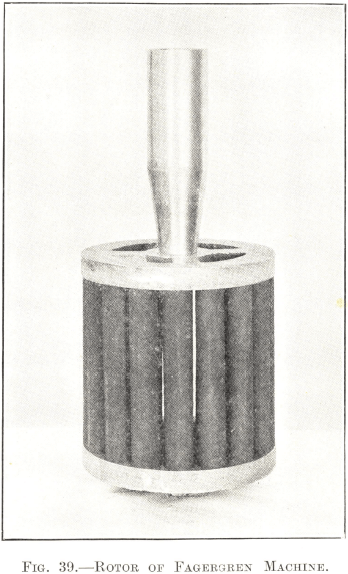
The outer zone of the cell is more quiescent than is common in mechanically agitated machines, due to the fact that the stream of pulp moves outwards in a horizontal direction ; the absence of surging on the surface is one of the characteristics of the Fagergren Machine. The mineral-loaded bubbles rise and collect on the surface of the pulp as a froth which is often voluminous enough to flow over the lip into the concentrate launder surrounding it without the use of a paddle, in which case a circular cell can be used. Should a paddle be required, a square cell must be employed. The tailing passes into a discharge compartment at the side of the cell, the heavier portion flowing out through a sand gate, while the fines overflow an adjustable weir which serves also as a means of regulating the level of the pulp in the machine.
The bottom of the cell is pierced with 12 small holes for the circulation of the pulp. They are equally spaced along two lines at right angles and deliver into transfer passages underneath through which the pulp passes to the port under the rotor, where it mixes with the feed and is drawn up with it into the cell. Rapid and positive circulation of the pulp is effected by these means.
The horizontal direction of the stream of pulp issuing from the rotor combined with its very thorough aeration makes it possible to maintain a shallow pulp column in a wide cell, resulting in a lower power consumption than is normally obtainable in a machine of the mechanically agitated type. The consumption seldom exceeds 2 kilowatt-hours per ton and is often considerably less.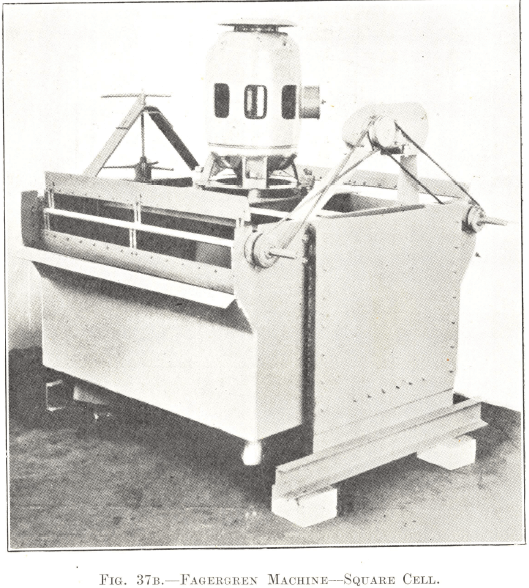
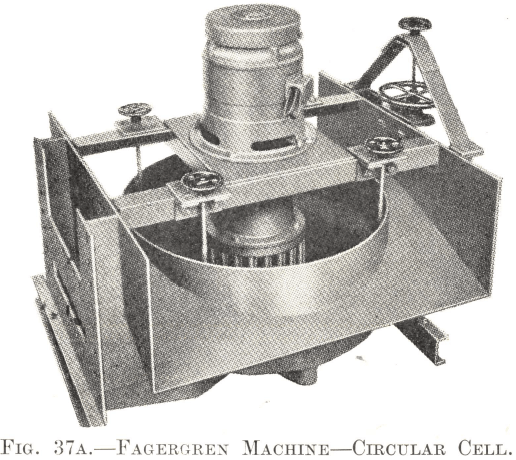
The capacities of the various sizes of Fagergren Machine are given in Table 25, a complete installation consisting of not less than six machines. The figures are for square cells ; those for the circular type are similar except that the volume of the cell is smaller.
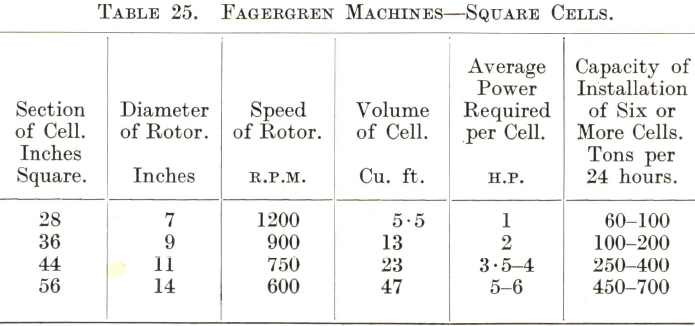
Laboratory Cell
For Sale this Laboratory Wemco – Fagergren Flotation Cell/Machine:
- Excellent Condition – Lightly Used
- Baffled Squirrel Cage Rotor with Round Posts
- Induced Air Flotation Machine (Induced air means that the rotor for the froth flotation machine draws in atmospheric air, rather than having an air compressor or blower providing “forced air”.)
- 115/230 volt 60 hz motor
- Drive belt may need to be replaced as machine as been in storage.
- Great addition to a metallurgical or mining laboratory.
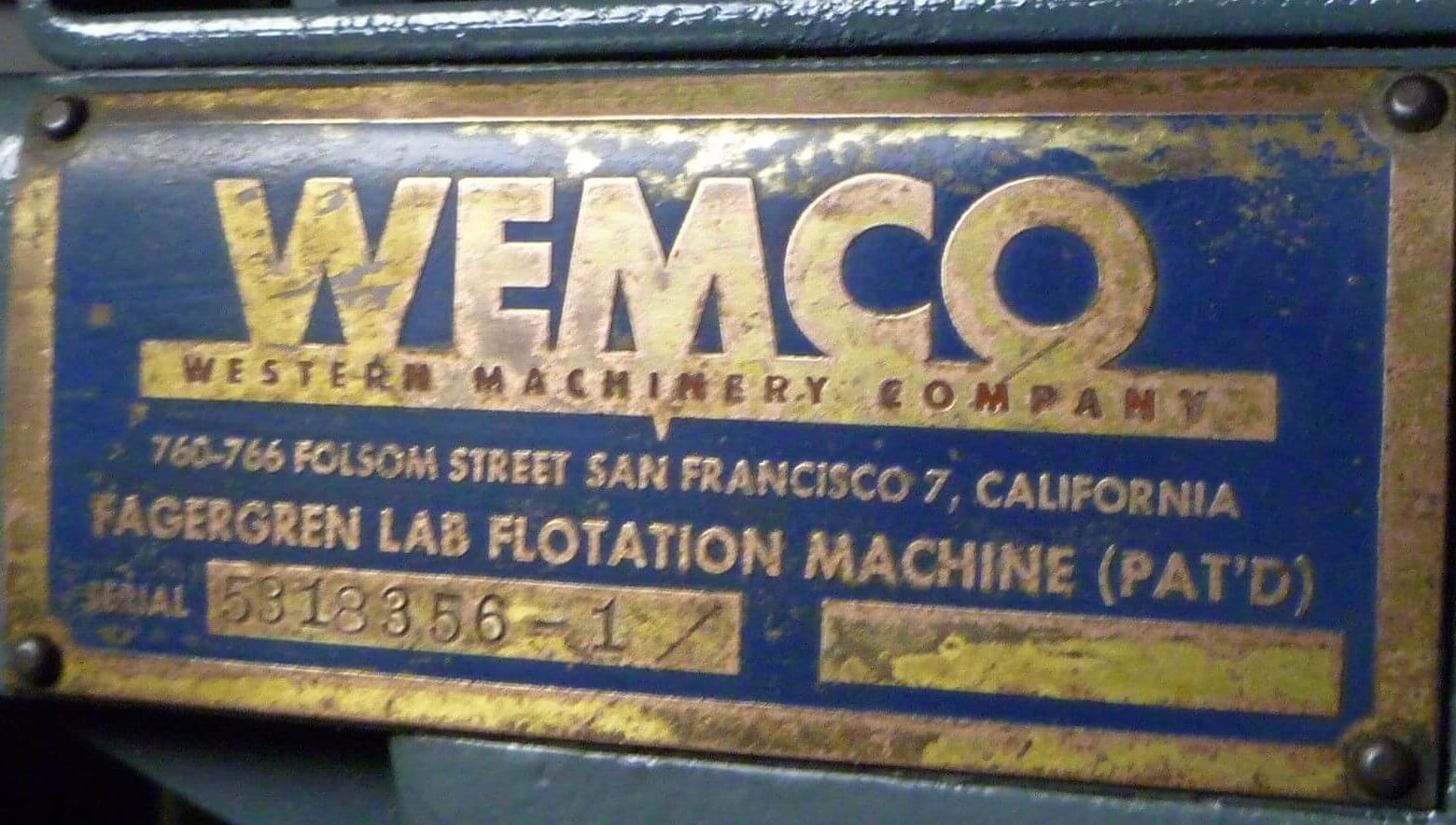
Kraut Flotation Machine
The four-bladed impeller of the two preceding machines is replaced in the Kraut Cell by a rotor in the form of a helical screw revolving in a stationary upright cylinder. The construction of a 2-cell unit is illustrated in Fig. 36. The cells are formed of mild steel plates welded together, the structure being extended above the level of the froth overflow lip in order to provide supports for the rotor mechanism and driving motor. The feed and discharge boxes are interchangeable so that the pulp can be made to flow in either direction through the cells. The discharge box is fitted with an adjustable weir, over which the bulk of the pulp is discharged, and a sand gate at the bottom for the passage of heavy material which might tend to choke in the weir. As no weirs are provided between individual cells, the pulp has a free passage along the machine ; the tailing weir thus governs the pulp level in the machine. Each cell, however, has its own adjustable froth lip by means of which the depth of froth may be regulated to suit the requirements of flotation.
The rotating portion of the mechanism consists of a hollow shaft, to the lower part of which is attached a cylindrical rotor ; the upper part is supported by two ball-bearings carried in a dust-proof housing. The rotor is not solid but consists of four vertical segments covered with hard rubber which are mounted on the shaft so as to leave four narrow slots between the segments. The rubber coverings are moulded in such a way that when the segments are assembled a series of projecting helices is formed on the outer side of the rotor. The assembly is closed top and bottom, but communicates with the interior of the hollow shaft through holes drilled for the purpose.
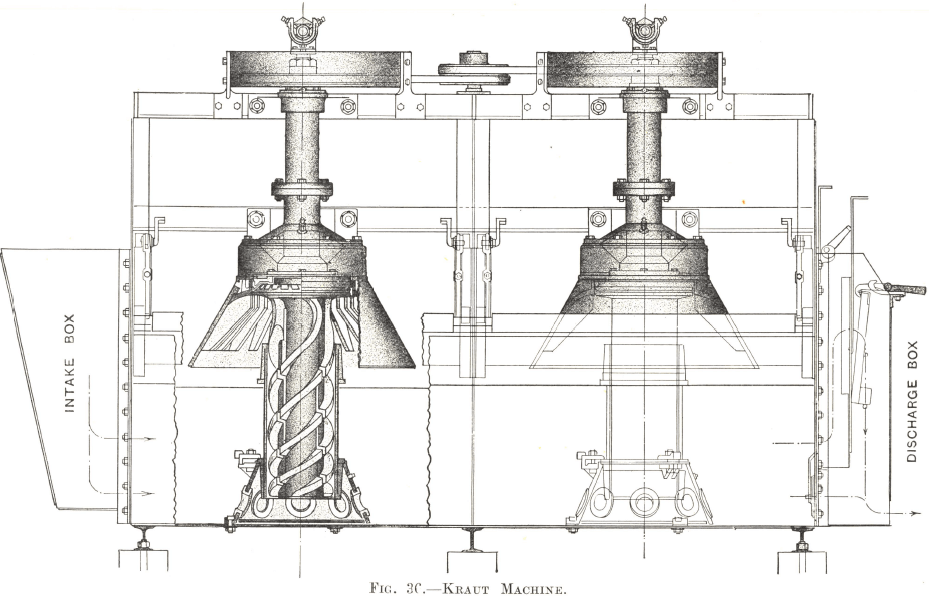
The rotor revolves in a stationary iron cylinder which is lined on the inside with hard rubber. The combination forms a very powerful screw pump when the rotor is turned at a high speed in the direction necessary to draw pulp in at the bottom of the cylinder and discharge it at the top. The helices are given an increasing lead upwards in order to allow the pulp to expand and draw in air through the vertical slots from the hollow shaft, which is closed at the bottom but is fitted with an air-regulating valve at the top designed to give accurate control of aeration.
The upper end of the rotor and stationary cylinder are overhung by a bell-shaped hood bolted to the ball-bearing assembly. The hood, which is rubber-lined, is open at the bottom and has a series of baffles cast on the inside to break up any whirl that the rotor may impart to the pulp.
Each pair of shafts is driven by a vertical motor mounted on the back of the superstructure of the cells, the power being transmitted by Tex-rope belts and grooved pulleys. In the case of a single cell an individual motor is used.
The Kraut Flotation Machine is normally made in two- and four-cell units with detachable feed and discharge boxes. Any number of units can be bolted together to form a complete machine.
The feed passes from the feed box along the length of the machine to the discharge weir, circulating through the rotor in its passage. As already explained, there are no weirs between cells and the tailing weir in the discharge box controls the pulp level in the machine. The intense agitation and aeration in the confined space between the rotor and stationary cylinder produces a cloud of bubbles so voluminous that no paddles are needed to remove the froth. The surface of the pulp in the cell is quiet with complete absence of surging owing to the construction of the bell-shaped hood over the rotor.
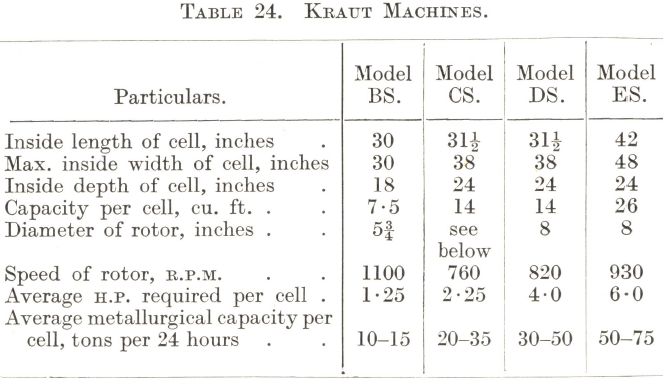
NOTE.—The diameter of the rotor of Model CS is 11 inches at the top and 6 inches at the bottom.
The Kraut Machine is made in four models, termed BS, CS, DS, and ES. Model CS is an old type which is being continued for the time being: it differs somewhat in design and performance from the other three newer machines. Particulars of the four models are given in Table 24.

